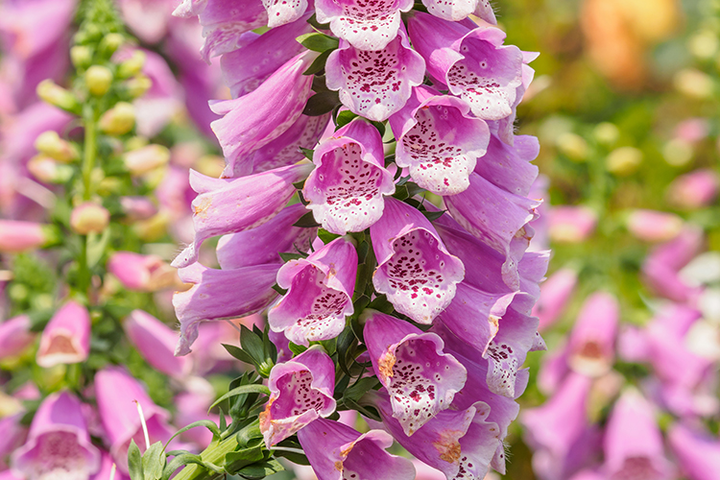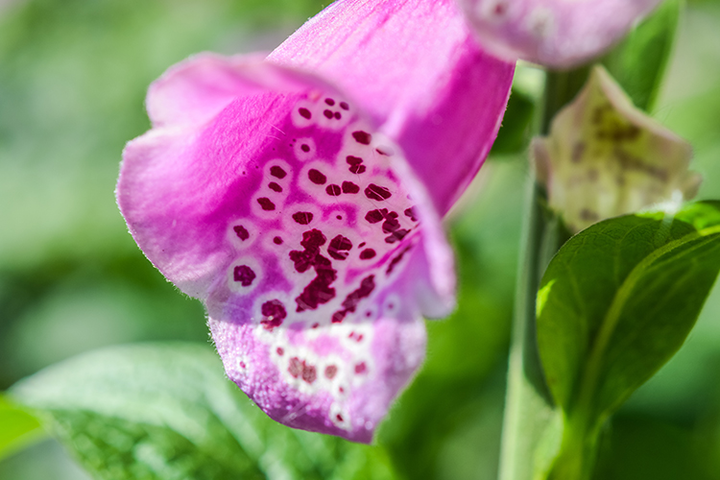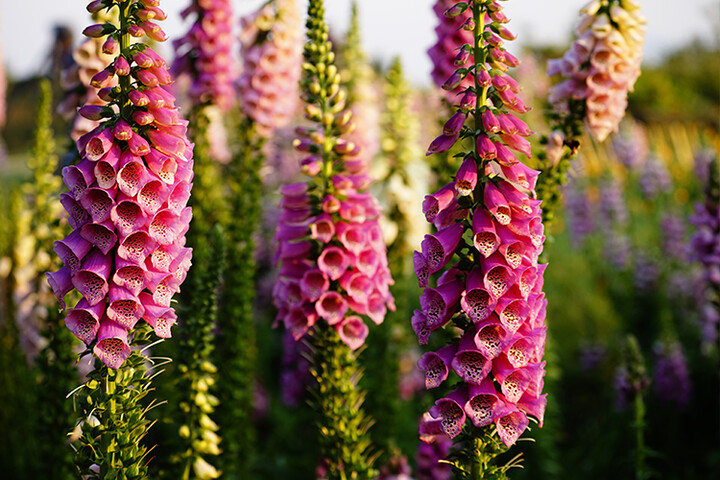
The foxglove plant, also known as Digitalis purpurea, is one of the most common wild flowers in existence.
In addition to this, it’s one of the most distinctive. This particular specie of plant has been cultivated in the UK for centuries, and grows in variety of countries, spanning from Western Europe to Russia.
Asides from being a great garden ornament, Digitalin, which is extracted from foxglove seeds, is used in a number of modern medicines. This potent poison is in an ingredient in many of today’s important drugs, particularly those used to treat heart complaints.
Seeds
Foxgloves seed freely when placed in the right environment.
This particular specie does not produce flowers or seeds until its second year, which means you must plant them for two years running in order to enjoy these plants every summer. If the conditions are not right, seeds can lie dormant for years – this is often due to inadequate moisture or light.
Planting
Foxglove plants thrive in rich, well-drained soil. It’s important to keep soil moist, as this will encourage the re-growth of flowers. For best results, prune your plants regularly and your Foxgloves will reseed themselves.

Growing in the garden
Although native to woodland, the foxglove is essentially a hedgerow plant.
They enjoy light shade, with the majority of species preferring cool temperatures, however they can thrive in environments where light varies throughout the day. The exception is the Mediterranean foxglove, which requires warmer temperatures. When planting in the garden, opt for lighter soils.
If you only have heavy clay to work with, add good compost to the top few inches for best results. In addition to this, mulch well to retain moisture, as the fibrous roots tend to spread vertically, creating vast mats that support the flower spikes.
If sowing your own seeds, do so when fresh. It’s wise to sow sparingly, as overcrowded seedlings can become susceptible to fungal diseases. For best results, grow in individual pots throughout the winter months and transplant outdoors the following spring.
Good plants to grow with foxgloves
The foxglove plant perfectly complements a number of other plant species, including Californian poppies, wafty Stipa tenuissima, eryngiums, sweet rocket and Ammi majus.
For use in bouquets
Foxgloves work extremely well in bouquets, complementing a number of other plants and hues, particularly bronze foliage.
Whether displayed in the home or used for the creation of a bridal bouquet, many find foxgloves, with their bell-shaped blooms, enchanting. In order to get your pick of the prettiest hues, opt to cut these flowers at the beginning of summer, as this is when they are in season.
From bright pink to purple and coral, to more low-key shades including peach, cream and apricot, there is something to suit all. The tall flowers tend to face upwards, in order to showcase their decorative speckled throats.
Varieties
There are a number of foxglove varieties to choose from, including:
Foxy Hybrids foxglove: these species grow between two and three feet tall and are a popular option for smaller gardens.
The common foxglove: this hybrid specie reaches between four and five feet in height and is ideal for outdoor spaces that offer more room.
Rusty foxgloves: these are the tallest varieties of foxglove and grow an impressive six feet in height. When growing these types of foxglove, you may have to stake them in order to keep them upright.

Colours
Traditionally, foxgloves come in the shape of a purple, pink shade with a spotted centre, which is tinged with green.
These clusters of tubular shaped blooms also come in lavender, yellow, pink, red, and purple hues.
Their colours vary very subtly, with the exception of wild foxgloves, which boast a pure white hue. The flowers themselves are extremely elegant in style, with the bells hanging gracefully from one side of the stem.
Basic care
Caring for the foxglove plant should include ensuring both children and pets are kept away from these shrubs, as all parts can be toxic when ingested.
When flowers cease to bloom, use pruning shears to deadhead the central flower spike – this is the cluster of flowers that emerge from the stem. Any spent flowers should be cut down to the next healthy blossom. This will prevent the plant from wasting energy on unnecessary seed production.
When watering the plant, avoid getting water on the blooms or leaves. Instead ensure the soil is evenly moist. Once the plant has finished flowering, cut back to the basal rosettes, these are the ground-level grouping of leaves. Allow the remainder of the plant to die naturally. To prevent disease, remove any debris from around the foxglove.
Foxglove meaning
Foxgloves have both positive and negative connotations. They are said to both heal and hurt, and in the language of flowers, they are often associated with insincerity. In folklore, it was said that picking a foxglove would offend fairies. This was likely a tale told to children to protect them, as these species of plant are toxic to both humans and animals if eaten.

Foxglove poison
The entire foxglove plant is toxic. This includes the sap, roots, leaves, seeds and flowers.
The leaves of the upper stem in particular are particularly poisonous, with just a small amount being enough to cause death.
The upper leaves however are more dangerous than the lower leaves. It’s just before the seeds ripen that the foxglove is at its most poisonous. If ingested, this specie of plant tastes bitter or spicy and has an off aroma. Ingesting 0.5 grams of dried foxglove or two grams of fresh leaf is enough to kill a person. In fact, inhaling the pollen alone can cause an allergic reaction.
Asides from humans, the plant is also harmful to animals including livestock and household pets, such as cats and dogs. As a result, it’s best not to have foxglove in your garden if it’s likely to be frequented by animals or children.
If you’re a big fan of having foxgloves in your garden and feel we’ve missed anything, please let is now as we’d love to share it with our readers.